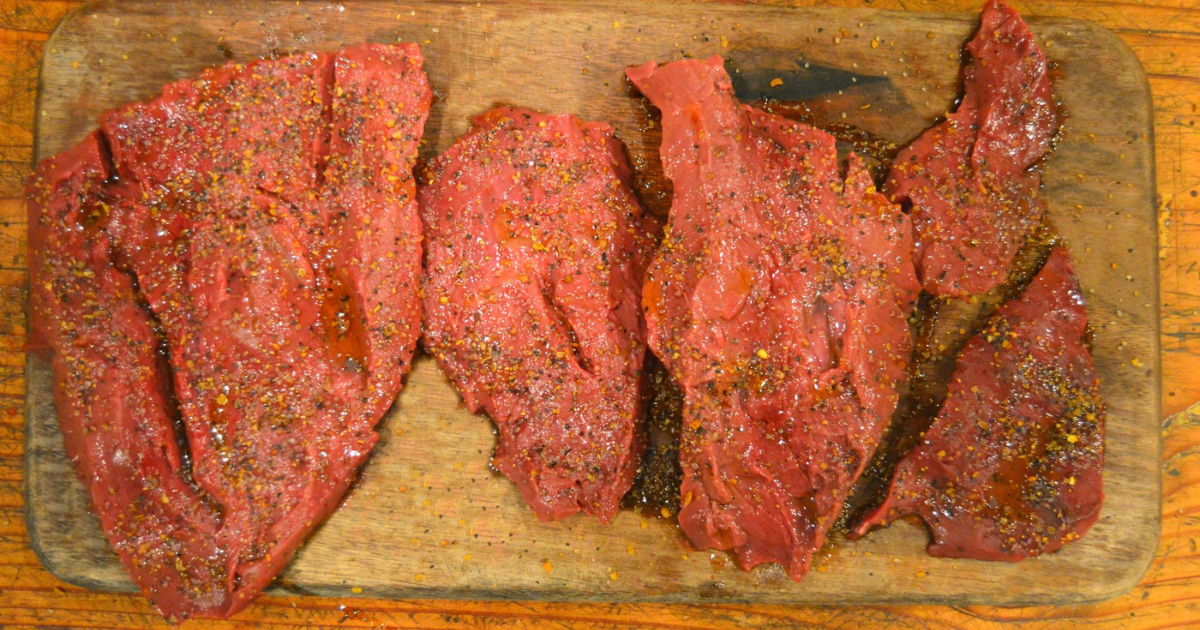When it comes to game meat, elk stands out for its rich flavour and lean qualities. Whether you’re a seasoned hunter or someone curious about trying something new, understanding what elk tastes like can help you make the most of this unique meat. In this blog, we’ll dive into the taste profile of elk, how it compares to other meats and tips on cooking it to perfection.
The Flavor Profile Of Elk
Elk meat has a distinct taste that sets it apart from more commonly consumed meats like beef or pork. Here are some critical characteristics of elk meat:
- Rich and Earthy: Elk has a deep, earthy flavour that comes from its natural diet. Unlike farm-raised meats that are often fed grain, elk feed on a variety of plants and herbs in their natural habitat. This diet gives the meat a more robust, slightly gamey flavour.
- Lean and Tender: One of the most notable features of elk meat is its leanness. It’s much lower in fat compared to beef, which can make it leaner and a bit more tender if cooked correctly. The low-fat content means that elk can dry out quickly if overcooked, so it’s essential to keep an eye on it while cooking.
- Mildly Sweet: Some people describe the taste of elk as having a slight sweetness, which can be attributed to its natural diet. This subtle sweetness can complement various seasonings and marinades, adding an extra layer of complexity to the meat.
Wild and Unique: The gamey flavour of elk is often less intense than that of other game meats like deer or moose. This makes it an excellent option for those who are new to game meats but still want to explore something different from traditional meats.
Comparing Elk To Other Meats
To get a better understanding of what elk tastes like, it helps to compare it with other familiar meats:
- Beef: Elk is often compared to beef due to its texture, but the flavour is noticeably different. Beef tends to be richer and fattier, while elk’s lean nature gives it a lighter taste. If you enjoy a lean cut of beef, such as sirloin or filet mignon, you’ll likely appreciate the flavour and texture of elk.
- Pork: Unlike pork, which has a milder and sometimes sweet taste, elk has a more pronounced gamey flavour. Pork is also fattier, which can make it richer in flavour, whereas elk’s leanness results in a lighter flavour profile.
- Chicken: Compared to chicken, elk is much more flavorful and has a denser texture. Chicken is mild and versatile, often taking on the flavours of the spices and seasonings it’s cooked with. Elk, on the other hand, has its distinct taste that doesn’t require much in the way of seasoning to be enjoyable.
- Other Game Meats: When compared to other game meats like venison (deer) or bison, elk is relatively mild. Venison can be pretty solid and gamey, which might not appeal to everyone. Elk offers a more subtle gamey flavour, making it a good entry point for those new to game meats.
Tips And Tricks
Cooking elk requires a bit of attention due to its low-fat content. Here are some tips to ensure your elk dishes turn out delicious:
- Avoid Overcooking: Because elk is so lean, it’s crucial to avoid overcooking it. Overcooking can make the meat dry and tough. Aim for medium-rare to medium doneness to keep the meat tender and juicy.
- Use Marinades: Marinades can help enhance the flavour and tenderness of elk. A simple marinade with olive oil, garlic, herbs, and spices can add depth to the meat. Allow it to marinate for a few hours or overnight for the best results.
- Rest the Meat: Letting elk rest after cooking allows the juices to redistribute throughout the meat. This will result in a more flavorful and moist dish. Cover the meat with foil and let it rest for about 5-10 minutes before slicing.
- Experiment with Seasonings: While elk has a natural flavour that is enjoyable on its own, don’t be afraid to experiment with different seasonings. Herbs like rosemary, thyme, and sage work well with elk. You can also use bold spices like paprika or cumin to complement its taste.
- Cook with Care: Whether you’re grilling, roasting, or pan-searing elk, it’s essential to cook it at a medium-high temperature to achieve a good sear without drying it out. For ground elk, ensure it reaches an internal temperature of 160°F (71°C) to be safe.
How To Enjoy Elk Meat
Elk meat can be used in a variety of dishes, from steaks and roasts to burgers and stews. Here are a few ideas to get you started:
- Elk Steaks: Perfectly cooked elk steaks can be a real treat. Season with salt, pepper, and your favorite herbs, then sear in a hot pan or on the grill for a delicious meal.
- Elk Burgers: For a tasty twist on traditional burgers, try making elk burgers. The lean meat holds up well when mixed with seasonings and is great on a bun with your favorite toppings.
- Elk Chili: Using elk in chili can add a rich, meaty flavor to your dish. Combine with beans, tomatoes, and spices for a hearty and satisfying meal.
- Elk Jerky: Making elk jerky is a great way to enjoy this meat in a portable and flavorful form. Marinade the strips and dehydrate them for a delicious snack.
Conclusion
Elk meat offers a distinctive taste that sets it apart from more common meats. Its rich, earthy flavor, combined with its lean nature, makes it a unique and enjoyable option for those looking to try something new. By understanding its flavor profile and following some simple cooking tips, you can make the most of elk meat in a variety of dishes. Whether you’re a game meat enthusiast or just curious about trying elk, this meat is sure to provide a memorable culinary experience.



